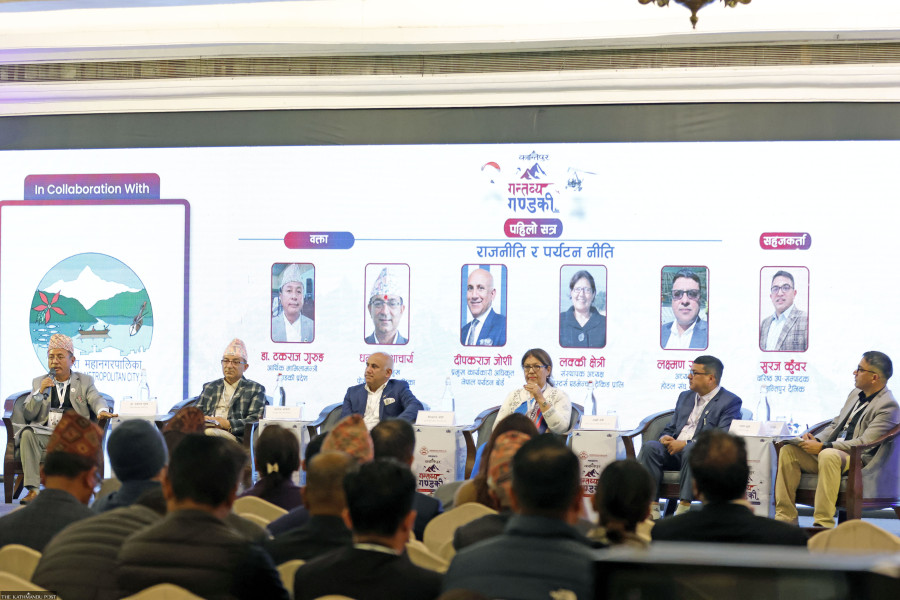National
Participants call for integrating tourism with agriculture for sustainability
Highlight the potential of agro-tourism, adventure sports, and cultural tourism in boosting employment and economic growth in Gandaki Province.
Post Report
Participants at a programme in Pokhara on Wednesday emphasised the integration of agriculture, culture, and adventure sports with tourism to promote sustainability, create jobs and boost the economy.
Speaking at the first session, ‘Politics and tourism policies’ during the ‘Gantabya Gandaki’ event organised by the Kantipur Media Group, Gandaki Province’s Minister for Economic Affairs Takraj Gurung said that agro-tourism is the province’s top priority.
The minister said the provincial government is linking agricultural aspects with tourism and promoting cultural and trade fairs to commercialise local ethnic groups and their art and culture.
He claimed that the government is also focusing on creating local employment and income through adventure sports, souvenir shops, and homestay programmes.
“We are currently developing a tourism policy highlighting nature, adventure, agriculture, culture, history, heritage, and religion,” Gurung said.
Also speaking, Pokhara Mayor Dhanraj Acharya announced plans to declare 2025 as the “Pokhara Visit Year” to boost tourist arrivals and create a destination that attracts returning visitors.
The mayor stressed that tourism is central to Pokhara’s identity and that the city’s infrastructure is being improved with projects worth Rs7.5 billion.
“All our initiatives are aimed at enhancing tourism,” Acharya said.
Deepak Raj Joshi, the chief executive officer (CEO) of the Nepal Tourism Board, emphasised the need to bring the benefits of tourism to every home and village in the country.
Joshi also said that tourism in Nepal is largely a technical and commercial field, and the country faces resource limitations. “We are a country with limited resources, and they are scattered across many unproductive areas, which is why we are not seeing positive results,” he said.
Referring to a 2018 survey conducted by the Board, Joshi revealed that approximately 1.3 million Indian tourists travel to Nepal via road networks, with many destinations available for them within the country.
However, Laxman Subedi, chairman of the Hotel Association in Pokhara, raised concerns about the accuracy of tourism data.
He said that the Nepal Tourism Board had inflated tourist arrival figures by including non-residential Nepalis visiting for family gatherings rather than counting actual tourists contributing to the hospitality and trekking sectors.
“These visitors do not contribute to the hotel, restaurant, or trekking sectors,” he said. “They come to meet their families and return, but we count them as tourists.”
Subedi also noted that while there are over 700 hotels in Pokhara, only 425 are members in the association, making accurate data collection challenging.
Lucky Chhetri, the founder of Three Sisters Adventure Trekking, highlighted the potential of women in the adventure tourism sector. She stated that many women could significantly contribute if given the opportunity.
Chhetri pointed out that the lack of opportunities has led to the underrepresentation of women in this field. She also raised concerns about the insufficient development of Nepal’s tourism sector despite its vast potential.
“Tourism is the key to development; everyone knows this. But why are we being so stingy in developing and expanding this sector? It remains unclear,” she said. “If we prioritise the development and expansion of this sector, it will significantly contribute to the overall economic advancement of Nepal.”




 23.12°C Kathmandu
23.12°C Kathmandu











